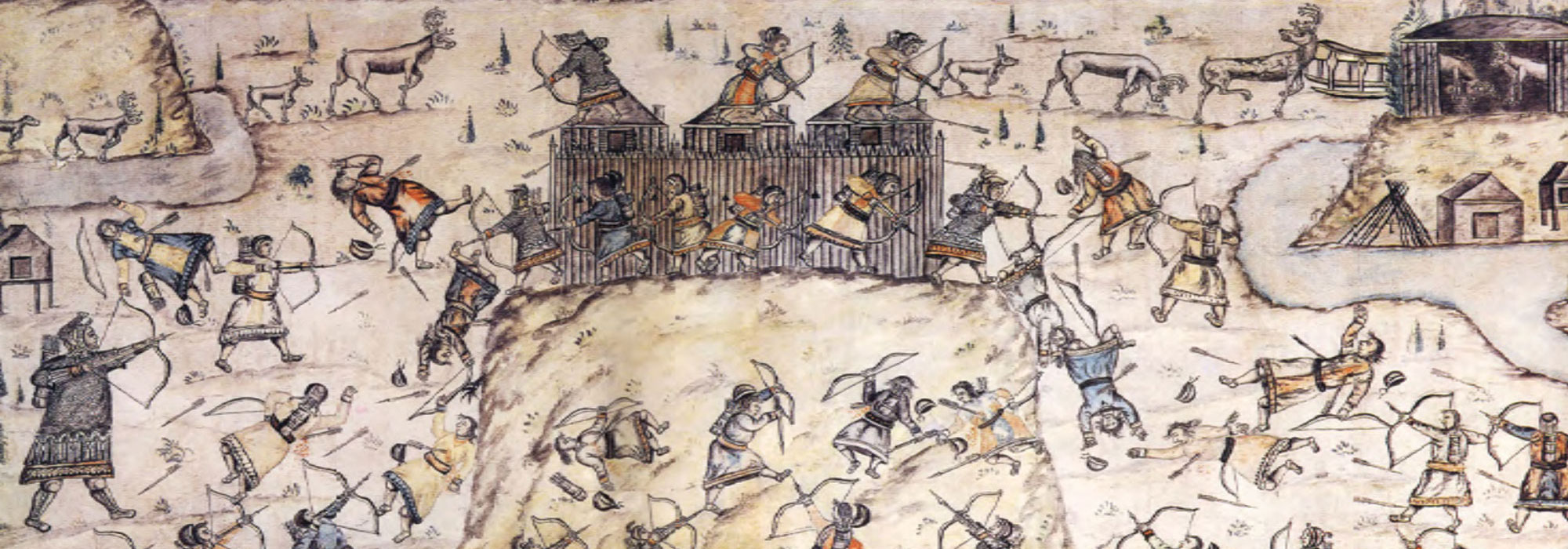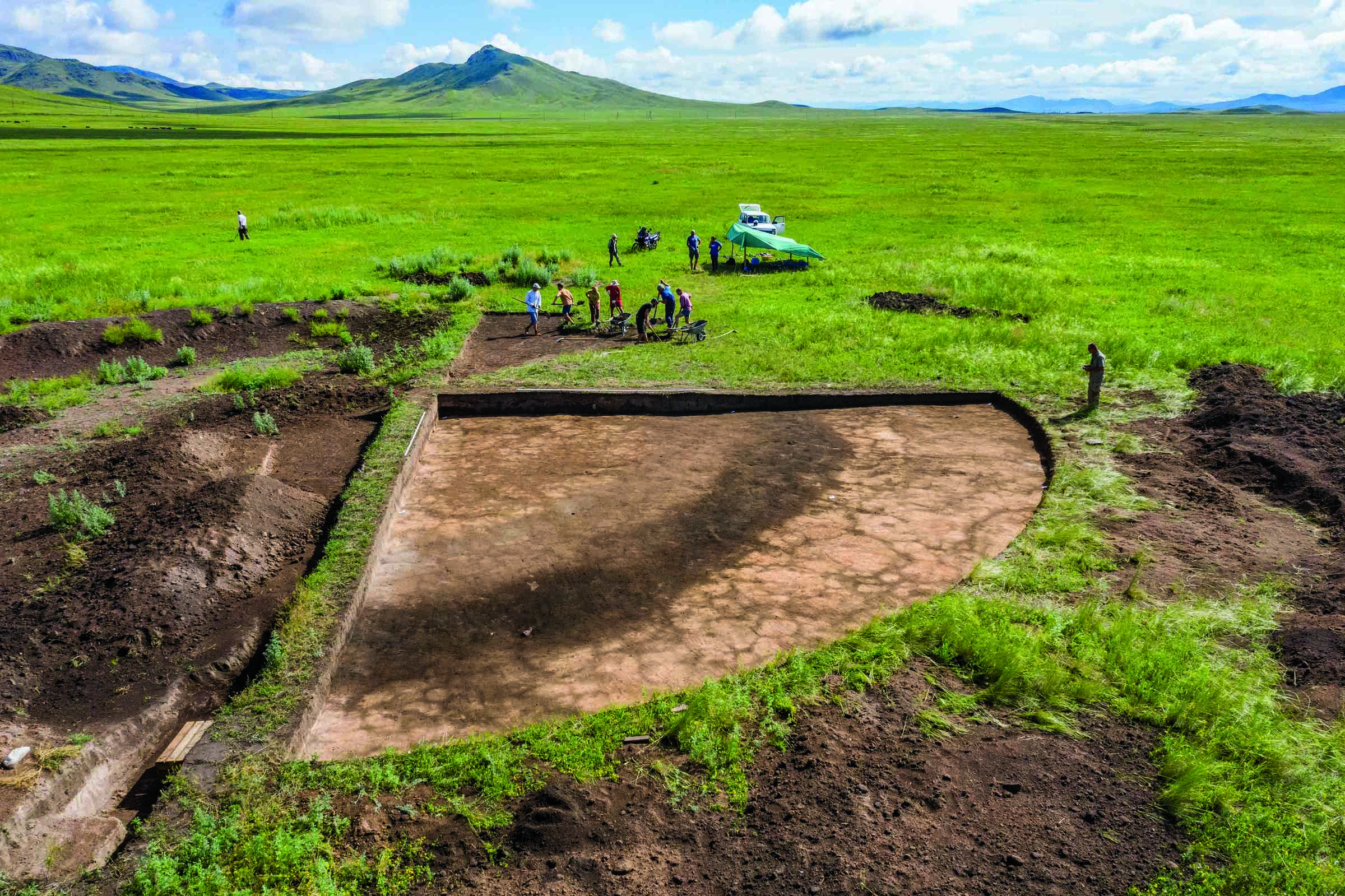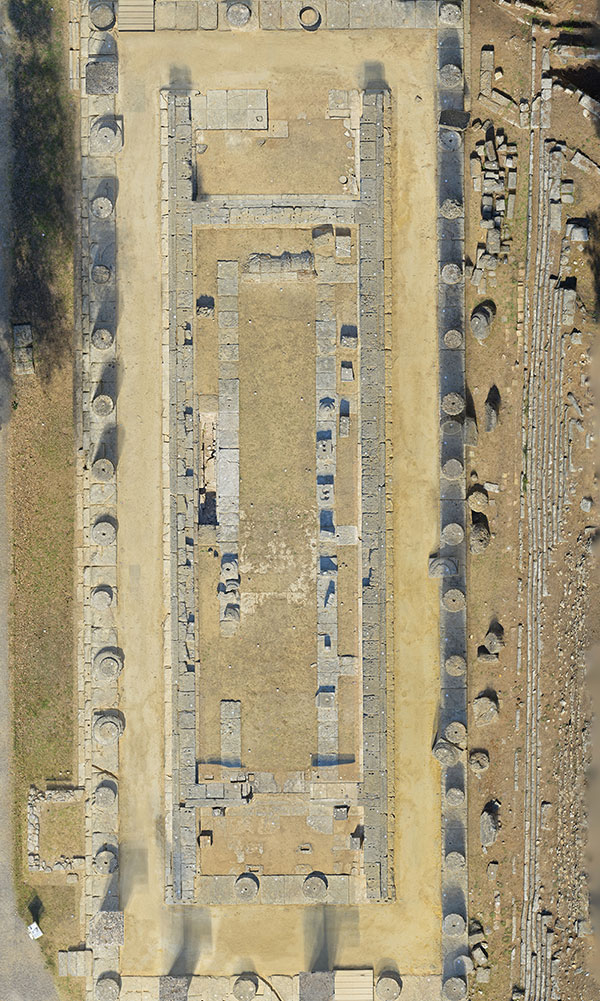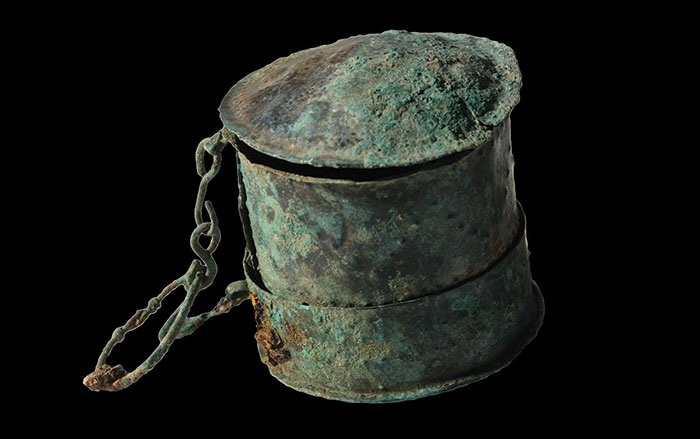
KOKORYA, RUSSIA—The Siberian Times reports that two local people found a wooden coffin, along with a birch bark quiver, complete with pockets for different kinds of arrows, as well as arrow shafts and iron arrow heads. They claim to have found the artifacts in a hole in a cliff. Archaeologists have not opened the coffin, which they believe dates to sometime between the thirteenth and fifteenth centuries, but the two residents say it held bones and a bow. The residents also retrieved two decorative bone plaques, the remains of silk ribbons, a leather strap, and birch bark linings for a saddle. “The leather strap was used for attaching the quiver to the belt, we believe,” said Nikita Konstantinov, head of the Museum of Gorno-Altaisk State University. “Judging by the shape of the arrow heads, I would say that the owner was a warrior.” He added that this type of quiver has not been found before in the Altai Mountains, and may have come from Mongolia. “When the Mongolian tribes came to Altai, previous Turk traditions were forgotten,” added researcher Alexey Tishkin. “Part of the local population was assimilated or destroyed.” The team of archaeologists is making plans to investigate the burial site. For more, go to “Letter from Siberia: Fortress of Solitude.”











